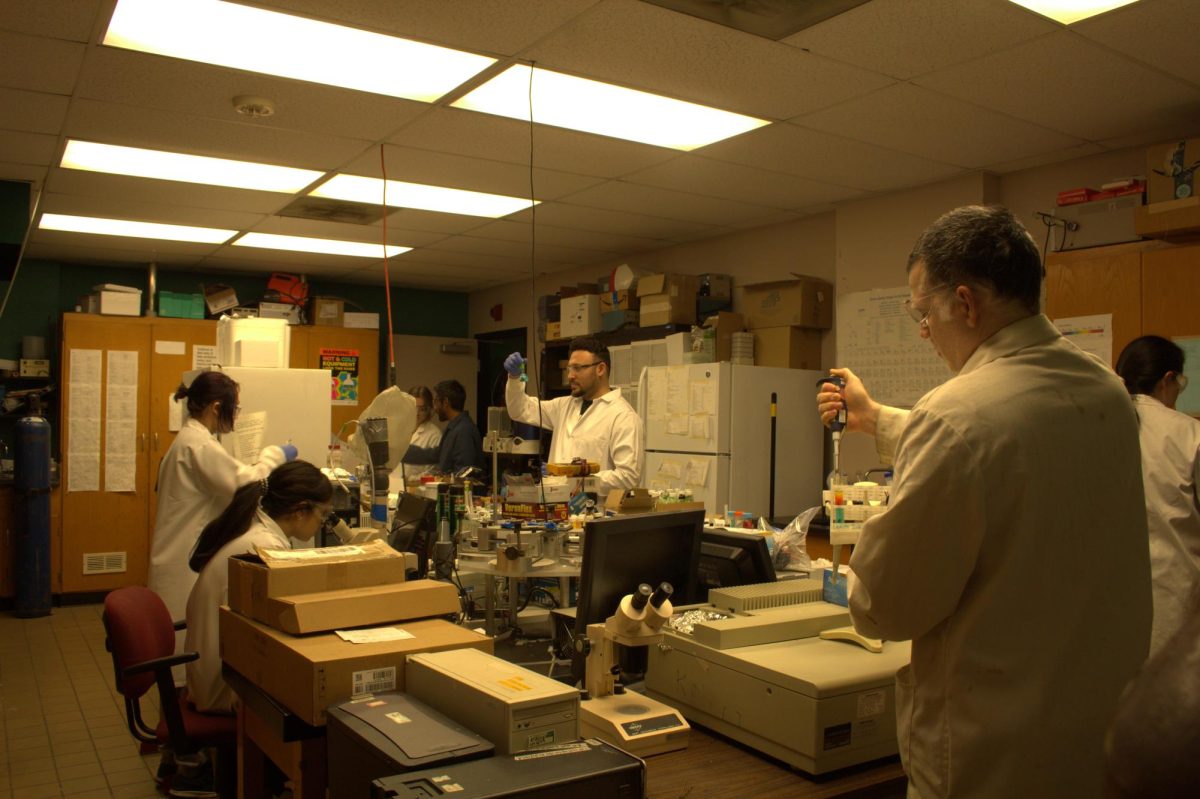UI’s first budget presentation has somber mood
March 11, 2016
Some surprising statistics in these lean budget times
— The University of Illinois’ flagship campus ranks fourth in the Big Ten in terms of state funding, at $11,975 per student. The Big Ten average is $9,032.
— Illinois ranks first among Midwestern states and large, technology-intensive states in terms of state support for higher education, at $8.08 per $1,000 of personal income.
Advertisement
But there’s a catch. Those figures count not just direct state appropriations that universities use to pay faculty and run their operations, but millions each year for employee pensions. And the state ranking includes billions in pension back payments owed by the state.
“It makes us look like we’re doing lots of investment in higher education,” UI interim Provost Edward Feser said.
Given the state’s debt, UI officials are convinced the higher-education funding picture isn’t going to get much better over the next 10 to 15 years.
That’s why the campus is looking beyond this year, and even next year, studying new ways to earn income, new ways to do business more efficiently, and new ways to track how money is allocated to colleges and departments, he said.
“What is the prospect that the state will have the fiscal ability to support the University of Illinois in the same way it has?” Feser asked an overflow audience at the first of three campus budget presentations Wednesday. “What do we do in response to the possibility, even the likelihood, that state support will be reduced simply because it must be? That is the problem we’re very concerned about.”
The Urbana campus received about $242 million in direct state appropriations in 2015 — compared to about $325 million a decade ago — and $241 million in “payments on behalf,” which includes the state’s pension payments for UI employees. State universities have received no money this year [2016], and Gov. Bruce Rauner has proposed a 20 percent cut from 2015 levels for next year [2017].
Feser said he’s often told by “people in the political arena” that the UI needs to make visible, significant cuts to show the effect of the budget impasse. He said the campus won’t shut down a program just to call legislators’ attention to it.
Advertisement*
“We’re not going to get into that. It’s not how we should be making decisions about the use of public resources,” he said.
“I can assure you it is hurting. The lack of an appropriation for nine months … is damaging our institution.”
$48 million in cuts
The campus made tens of millions in cuts this year — roughly 20 percent of its state appropriation, or about $48 million. But some of that was offset by revenue growth from tuition income and other sources. Feser didn’t have an exact number for the net impact but has estimated it at $20 million.
It’s meant that positions have been left unfilled and class sizes have increased, he said.
The campus also dipped heavily into its cash reserve of just over $1 billion to cover spending with no state budget, Feser said. But that’s not a long-term solution, he said.
About half of the reserve is in “plant funds,” money used for maintenance, repairs and renovations, Feser said. The campus has “dozens and dozens” of projects, mostly a backlog of maintenance, that would have to come to a stop if no state appropriation materializes, he said.
About $310,000 of the reserve is held in endowment accounts or raised by self-supporting units and restricted for specific uses, he said. And $204,135 is used as institutional funding, for startup packages for new professors or allocated to specific faculty members from research grants. There’s some flexibility there, but “we don’t want to go there if we don’t have to,” he said.
“For our folks in Springfield, it’s not a simple exercise to cut your state institution by $241 million,” he said.
Illinois is already an expensive school compared to its Big Ten counterparts, and other schools are freezing tuition, too, so higher tuition “isn’t the solution,” he said.
Fundraising is a longer-term answer, he said.
“We have to use resources more efficiently, we have to reduce costs aggressively, we have to do things differently than we’ve done them before,” Feser told his audience.
That includes better utilizing programs with low enrollment, cutting administrative costs and capturing new opportunities to make money — increasing tuition income, for example, by creating exciting new programs that will attract students, he said. And that means tackling organizational issues that slow down new initiatives, he said.
Reforming the budget system is key, Feser said, so the campus can better track spending and allocate resources, he said.
A task force reviewing the current system describes it as “complex,” “illegible” and “nontransparent” and says it constrains innovation.
“We don’t budget effectively,” he said.
One problem: the accounting systems used by the campus, colleges and departments aren’t aligned.
“What does it cost to teach a student in program x? We don’t know the answer to that question. How do you allocate resources when you don’t know what something costs?” Feser said.
“We need budget models in place so good decisions are made at the level they should be, but appropriate reporting and accounting so we’re all moving in the black, not in the red,” he said.
He pledged to consult with faculty and others across campus as budgeting reforms move ahead, with a steering committee to be formed and a website established.
Feser said other top state universities are facing similar challenges, noting that Michigan reduced its spending by $180 million to $200 million over a six-year period, through cost-cutting and revenue growth.
“I have no doubt we can do it,” he said.
$2.04 billion breakdown
Where does the UI’s Urbana campus get its money?
Slightly more than half comes from unrestricted sources, spent on academics, financial aid, administration and university operations:
— Tuition and fees: $682 million [33%]
— State appropriations: $241 million [12%]
— Institutional cost recovery [from grants, etc.]: $139 million [7%]
— Other institutional funds: $17 million [1%]
SUBTOTAL: $1.079 billion [53%]
The rest is committed to specific uses:
— Auxiliary enterprises [Illini Union, housing, etc.]: $243 million [12%]
— Departmental activities: $134 million [7%]
— Gifts and endowment income: $131 million [6%]
— Sponsored research and federal appropriations: $453 million [22%]
SUBTOTAL: $961 million [47%]
___
(c)2016 The News-Gazette (Champaign, Ill.)
Visit The News-Gazette (Champaign, Ill.) at www.news-gazette.com
Distributed by Tribune Content Agency, LLC.
Advertisement








